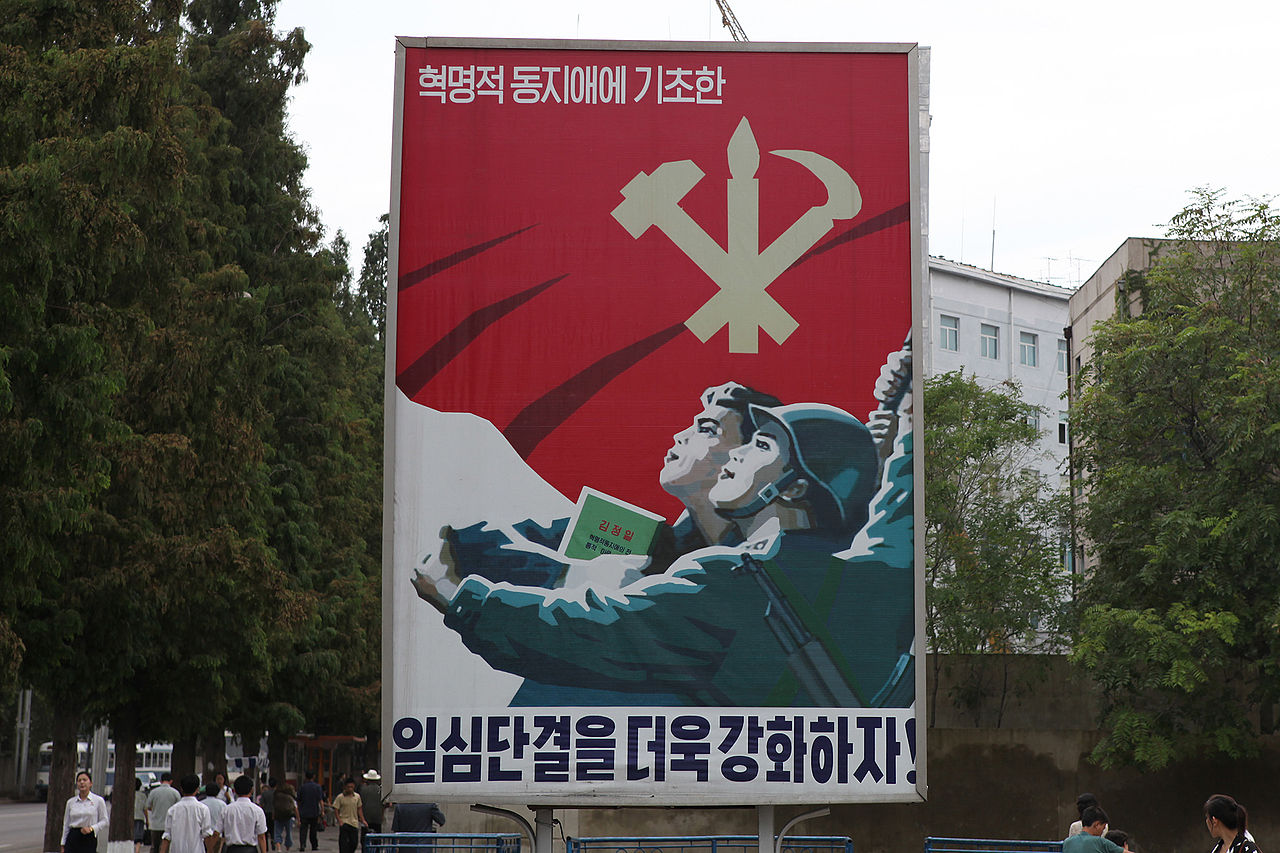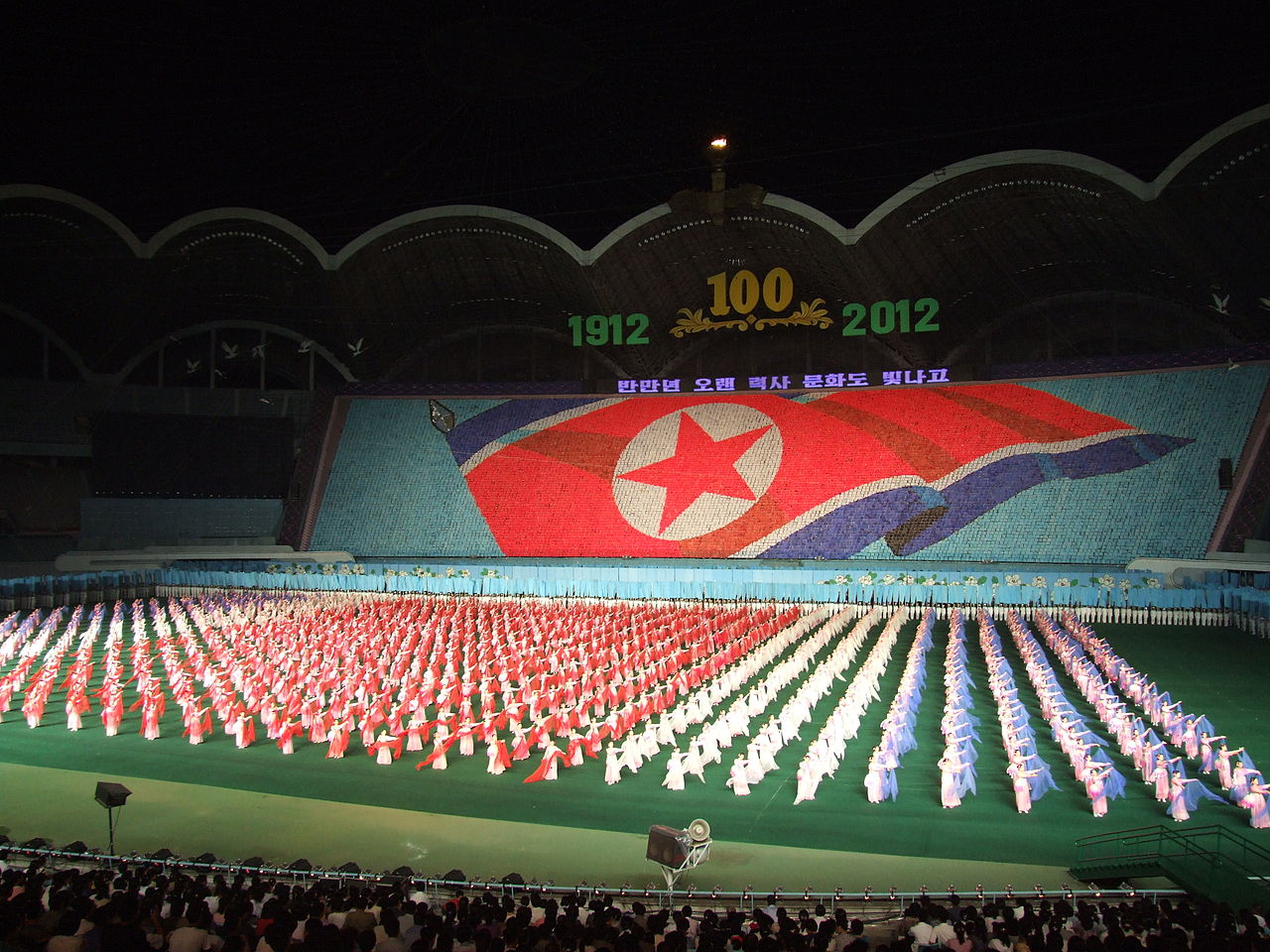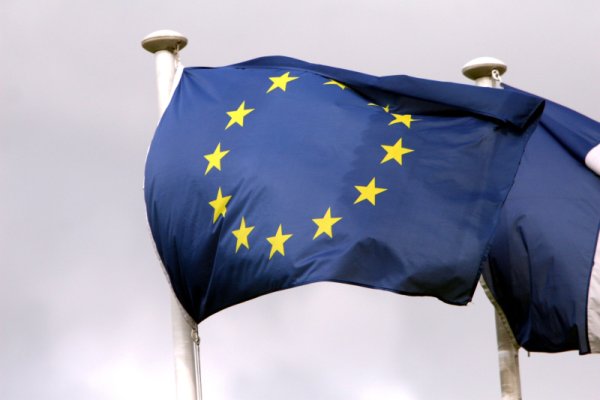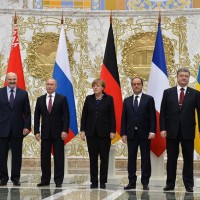North Korea is often associated with nuclear weapons and displays of military power, to the extent that finding the combination of the terms soft and Pyongyang in one sentence would be truly unusual. However, some analysts believe that even an authoritarian and isolated country such as North Korea is using soft power to promote its relevance in the international area. This article analyses specific examples of soft power politics of Kim’s regime.
The Asia-Pacific region is becoming a more and more important geopolitical actor. That is so due to a double process. On one side stands the highlighted hard power, particularly the militarization of the region and economic growth through specific tools and means. [1] On the other side, soft power’s often-underappreciated influence on Asian foreign policies.
As a relatively new term, soft power was defined by liberal theorist Joseph Nye as the ability to shape the preferences of other states through attraction rather than coercion or threats. The attraction is made and promoted through three main sectors: culture, political values, and foreign policies. [2] South Korea and the so-called Korean music wave are the most discussed and visible examples of soft power in the Asia-Pacific. Other examples include India’s yoga diplomacy and Japan’s promotion of anime as a form of cultural diplomacy and soft power. [3] [4] [5]
Despite these examples, many analysts consider soft power to be a meaningless concept. [6] [7] That is mainly because they see hard power as the only way to gain influence, and soft power promotion makes no sense to them. Popularity should not impact state foreign policy, and governments don’t need to win people’s minds and hearts to achieve their aims. As Joseph Nye, the coiner of the concept of soft power, points out, Kim Jong Il’s nuclear program was unaffected by his fondness for Hollywood films. [8]
Moreover, studying and analyzing soft power and its consequences is difficult due to several epistemological and ontological challenges. The major challenge is the absence of a universal definition of soft power. The boundaries of what can be subsumed under this category are unclear and disputed. [9] The lack of a clear definition also means that the perception of this concept can differ based on the cultural and/or linguistic context in which it is used.
Cultural and linguistic contexts are also important in understanding and interpreting the intended goals and shared narratives. Deep knowledge of local and regional nuances is crucial for analysts to be able to produce a case study. The long-term isolation of North Korea, which was increased by the Covid-19 pandemic, is a major obstacle for any foreign researcher to conduct a comprehensive study about the population of North Korea. [10]
Another challenge lies in the complexity of the international system. This means that we can never attribute the changes in international relations or domestic policy to soft power with much certainty. The multifactorial character of politics implies that soft power is never a single reason for changes. Therefore, while studying soft power, it is only possible to look at the individual aspects of it without evaluating its effectiveness.
Propaganda as a tool of soft power
Propaganda, which can be defined as the spreading of ideas, information, or rumour for the purpose of helping or injuring an institution, a cause, or a person, is one of the oldest examples of soft power used throughout history. [11] State propaganda can be directed inwardly at the domestic population or outwardly at a foreign audience. At home, its goal may be to build an image of a strong leader, a prosperous state, or to spread fear of an external enemy and, as a result, eliminate the potential risk of opposition arising from the population. At the international level, the goal of propaganda might be, for example, to create discursive conditions for establishing partnerships or influencing public opinion in hostile states.
State propaganda in North Korea is well-established and institutionalized in practice. The closed information environment of the Democratic People’s Republic of Korea (DPRK) provides the state authorities with ideal conditions for controlling „the hearts and minds” of the population. Article 67 of the North Korean Constitution formally protects freedom of speech and freedom of the press. [12] However, the organization Reporters Without Borders consistently ranks North Korea in the lowest positions of their annual World Press Freedom Index. This is due to the broad restrictions, ban on foreign media in the country, and mandatory membership of all North Korean journalists in the Workers Party, exposing themselves to the possibility of harsh punishment even for the most minor „mistakes.” [13]

At the institutional level, North Korean propaganda is covered by the Propaganda and Agitation Department (PAD), which is under the control of the Party. Defector-run publication Daily NK reported in 2015 that the head of PAD was Kim Jong Un’s younger sister Kim Yo Jong. PAD is in charge of cultural affairs and news media. It has direct control over Publications Guidance Bureau (responsible for news reports and publishing), Central Broadcasting Commission (responsible for DPRK’s radio and TV broadcasting), film studios, and performing arts. PAD also covers political education, ideological indoctrination, and public events. [14]
Besides traditional media like TV and radio, DPRK’s propaganda is also present on social media platforms. As the internet is hardly accessible to North Koreans, this type of propaganda is directed mainly toward foreign audiences. Its main goal is the depiction of North Korea as a prosperous and strong state.
Well-known are North Korean YouTubers, mostly young women or girls presenting their „ordinary life.” However, the internet and luxury goods presented in the video are inaccessible to ordinary people in North Korea. This contrast can be a sign that the videos are a product of state-sponsored propaganda. [15]
One of the widely spread themes of DPRK’s online propaganda is the cult of the Kim dynasty and supreme leader Kim Jong Un. A Plethora of Kim Jong Un‘s fan pages can be found on well-established social media, including Twitter, YouTube, and Weibo. These online agitations are believed to be supported by the supreme leader himself. [16]
The image of Kim Jong Un
In a broader context, the media promotes a favorable picture of North Korea. In recent years, an intriguing phenomenon is emerging in relation to Kim Jong Un as a person. The trend has been dubbed „the Kim Jong Un effect.”
Regarding North Korea, the British mainstream media focused between 2000 and 2020 on the nuclear program, economic policies, and foreign relations. In contrast, British tabloids and the Western media focused more on Kim Jong Un’s family, personal life, North Korean tourism, sports, film, and cinema. That has contributed to a shift in public opinion on the controversial country. It also reflects the public’s interest in softer topics related to North Korea and proves its soft power success. [17]
Interestingly, the mystery surrounding leader Kim Jong Un contributes to people’s curiosity about him. For example, his birth year is claimed to be 1984, yet even this basic fact has never been confirmed or disputed. [18] Furthermore, both the information and the personal image are tightly controlled. When Sony announced the satirical comedy „Interview” (2014), which mocked Kim Jong Un, the North Korean hacker group responded by stealing confidential information from the organization. [19] As a result, it is reasonable to believe that Kim Jong Un’s emotional address and apologies to his nationals during the Covid-19 pandemic were intended to alter his image in the international community. [20] It also demonstrates the effort to modify people’s perceptions of the country and shows the use of soft power in practice.
Plane ticket to North Korea
Tourism is one of the most obvious examples of soft power in culture. Kim Jong Un frequently mentions it in his speeches and works to develop appealing tourist destinations to boost the economy. [21] Aside from this, another goal is clear: the Korean government is attempting to show foreigners a nice and opposing side of the country. As a result, this type of tourism has earned the label „social” and is regarded as part of internal and external propaganda. [22] According to Czech expert on DPRK Nina Špitálníková, real life in Pyongyang´s streets stops and depopulates whenever a tourist tour is coming. [23]
Samjiyon, Wonsan, and Yangdok are all tourist destinations designed to support these initiatives. In the case of North Korea, tourist resorts are typically linked to developing Special Economic Zones. Aside from revenue, the goal is for Pyongyang to gain prestige and attract more foreigners. [24] This endeavor, however, is not always fruitful. A Mount Kumgang site would be an appropriate illustration of soft power loss. After an incident in 2008 in which a South Korean tourist was shot for entering an unauthorized area, a resort near the border with South Korea was forced to close. [25] As a result, the world sees the tensions between the two countries rather than the more pleasant side of North Korea.
In a unique relationship with Seoul, both administrations are attempting to find common ground in their differences through people-to-people exchanges. This interaction is based on exchanging ideas and opinions concerning the countries‘ social and cultural characteristics. Participants in these meetings are mostly South Korean individuals as well as North Korean party supporters and loyalists. The frequency of these encounters reflects the relations and conditions between both governments together with the economic sanctions imposed on Kim Jong Un’s leadership. That is also the reason why there were only 11 of these contacts between 2017 and 2022. [26]
Only a half bowl of sinseollo soup
Overall, soft power has a limited influence, and North Korean efforts to be internationally acknowledged are also pursued in the matter of food and music, traditional cultural components.
North Korea has one additional crucial purpose in food diplomacy: acquiring foreign currency through restaurants abroad while avoiding UN sanctions. [27] Pyongyang and Okryu-Gwan, two well-known restaurant chains, are present in many areas, serving traditional dog meat, seafood soup sinseollo, and North Korean beer Taedonggang. Visitors can listen to North Korean live music while eating and drinking, admire photographs of local nature, and talk about numerous issues with the female North Korean waitress. [28] The common side consequence of these activities is hence limited cultural expansion.
The same might be said, for example, about Moranbong, a North Korean music band. Kim Jong Un employs a female band to sing and laud his dictatorship at major events. Regime celebrations include stylish clothes, traditional songs, and, on occasion, projections of the ICBM launch behind their backs. [29] Their rare performances included singing with a North Korean orchestra at the 2018 Olympic Games in Seoul. [30] It was also intended, but never carried out, to send them to China in 2015 to enhance relations between the two countries. [31] The logic behind creating this type of band is clear: Kim Jong Un and his regime can utilize them to spread ideas and propaganda in the way that they require. Displaying the ICBM launches or signing pleasant songs might have a desirable gradual influence on international society.
Sportswashing of Kim’s regime
Another widely used way of spreading soft power is sport. Many countries used physical competition to demonstrate the power and agility of their populations in history. This phenomenon is nowadays typically referred to as sport-swashing, which is the practice of an organization, a government, a country, etc., supporting sports or organizing sports events to improve its reputation. [32]
Typical artefacts of the communist ideological base in North Korea are the Arirang mass games. These do not differ too much from the so-called „Spartakiads,” known in socialist Czechoslovakia. Arirang is a visual, acoustic, and gymnastic performance taking place in big stadiums. Performances are said to involve around 100 000 participants. As with any other mass event in North Korea, Arirang is organized by the state and fulfils the demonstrative and integrative functions. [33]

While Arirang mass games are important mostly on the intra-state level, DPRK aims to use sport-swashing as a tool also on the international level. Studies show North Korea exported mass contests and sports events to some African and South American countries during the Cold War. DPRK used games instructors to spread anti-western and anti-imperialist ideas in the third world. [34] [35]
Also, the most prominent global sports event, the Olympic Games, became an opportunity for North Korea to spread its soft power. The 2018 Winter Olympics held in South Korea came into the spotlight of world media when North Korea announced its willingness to participate. Korean athletes marched under the unification flag in 2018 and even had a unified women’s ice hockey team. This led to an unprecedented summit of both Koreas in Singapore. [36] Even if participation in the 2018 Winter Olympics cannot be described as sport-swashing, this case shows us how important so-called mega-events are for diplomacy and geopolitics discourse.
A threat to worry about
Despite all these examples, the international community tends to focus mainly on North Korea’s hard nuclear capability. Kim Jong-un’s military strength is viewed as an urgent threat to global order and stability. Furthermore, there are assumptions about the number of nuclear weapons, which is estimated to be around 200 by 2025. [37] This increasing number, together with the recent improvements in technologies in the North Korean army, is something that the international community should be aware of. [38] It brings tensions and uncertainty to the whole international community. Compared to this danger, sports, cultural activities, and internet influence are dwarfed by present military forces.
However, the distinctions between hard and soft power might at times be blurred. [39] No state relies solely on one type, and both aspects can be observed even during conflict. The wars of the 21st century are happening not only on the battlefield but also in the media. It is not only important who wins with the weapons, but also whose story is more powerful. That is why soft power in the form of propaganda, tourism, media presentation, or culture should not be overlooked. Especially now, in the digital era, the tools can be even more dangerous than before and bring more significant instability to the international order. Due to this, it makes sense to analyse topics such as the Moranbong music band or North Korean Youtubers. It is also a reason why it’s possible to use the terms „North Korea” and „soft” in the same sentence.
Article reviewed by: Kristýna Drmotová, Dávid Dinič
Sources
[1] Karim, M. F., & Chairil, T. (2016). Waiting for Hard Balancing? Explaining Southeast Asia’s Balancing Behaviour towards China. European Journal of East Asian Studies, 15(1). Retrieved from https://www.jstor.org/stable/44162371.
[2] Kearn, D. W. (2011). The hard truths about soft power. Journal of Political Power, 4(1), 65–85.https://doi.org/10.1080/2158379x.2011.556869.
[3] Martin, P. (2015, January 25). Yoga Diplomacy. Foreign Affairs. Retrieved fromhttps://www.foreignaffairs.com/articles/india/2015-01-25/yoga-diplomacy.
[4] Rosyada, S. (2022). Anime as a form of Japan’s Soft-Power efforts (Anime sebagai salah satu bentuk upaya Soft-Power Jepang). Retrieved fromhttps://www.researchgate.net/publication/364342217_Anime_as_a_form_of_Japan’s_Soft-Power_efforts_Anime_sebagai_salah_satu_bentuk_upaya_Soft-Power_Jepang.
[5] Valieva, J. (2018). Cultural Soft Power of Korea. Journal of History Culture and Art Research, 7(4), 207–213.https://doi.org/10.7596/taksad.v7i4.1837.
[6] Manor, I. and Golan, G.J. (2020). The Irrelevance of Soft Power. E-international relations, [online] 19 Oct., pp.1–6. Available at: https://www.e-ir.info/2020/10/19/the-irrelevance-of-soft-power/ [Accessed 20 Mar. 2023].
[7] Ferguson, N. (2009). Think Again: Power. Foreign Policy. [online] 3 Nov. Available at:https://foreignpolicy.com/2009/11/03/think-again-power/ [Accessed 20 Mar. 2023].
[8] Nye, J.S. (2009). Get Smart: Combining Hard and Soft Power. Foreign Affairs, [online] 88(4), pp.160–163. Available at: https://www.jstor.org/stable/20699631 [Accessed 18 Mar. 2023].
[9] Rothman, S. B. (2011). “Revising the soft power concept: what are the means and mechanisms of soft power?”. Journal of Political Power 4 (1). DOI: 10.1080/2158379X.2011.556346.
[10] Ildar, D. (2021). North Korea’s Isolation Is Deepening. [online] The Diplomat. Available at: https://thediplomat.com/2021/06/north-koreas-isolation-is-deepening/ [Accessed 30 May 2023].
[11] Merriam-Webster. (n.d.). Propaganda. In Merriam-Webster.com dictionary. Retrieved May 13, 2023, fromhttps://www.merriam-webster.com/dictionary/propaganda.
[12] DPRK. Constitution: CHAPTER V. FUNDAMENTAL RIGHTS AND DUTIES OF CITIZENS, (2007). Retrieved May 13, 2023 from: https://web.archive.org/web/20090426060256/http:/www.kcckp.net/en/great/constitution.php?6.
[13] Reporters Without Borders. (2023, May 13). Index RSF. Retrieved from rsf.org website: https://rsf.org/en/index.
[14] Madden, M. (2015, August 14). North Korea’s New Propagandist? Retrieved May 13, 2023, from 38 North website:https://www.38north.org/2015/08/mmadden081415/.
[15] Yeung, J., & Bae, G. (2023, February 5). North Korea is trying a new propaganda strategy: YouTube influencers. Retrieved May 13, 2023, from CNN website: https://edition.cnn.com/2023/02/04/asia/north-korea-youtuber-yumi-intl-hnk-dst/index.html.
[16] Bartlett, J. (2021). From Ethnic Nationalism to Social Media: How North Korea Leverages Its Soft Power Abroad. The Diplomat. [online] 21 Aug. Available at: https://thediplomat.com/2021/08/from-ethnic-nationalism-to-social-media-how-north-korea-leverages-its-soft-power-abroad/ [Accessed 20 Mar. 2023].
[17] Seo, S., Choi, J. and Choi, H. (2022). The ‘Kim Jong-un Effect’ and the mainstreaming of North Korea coverage in UK Media. European Journal of Communication, [online] p.026732312211232. Available at:https://doi.org/10.1177/02673231221123203 [Accessed 20 Mar. 2023].
[18] Atsuhito, I. (2020) Characteristics of Kim Jong-un’s leadership: analyzing the tone of official North Korean media, Journal of Contemporary East Asia Studies, 9(1), 50-64, DOI: 10.1080/24761028.2020.1752425.
[19] Vos, A. (2020). Whose cyber is it anyways?: A private perspective on a public good. Atlantisch Perspectief, 44(4), 41–45. https://www.jstor.org/stable/48600571
[20] McCurry, J. (2020, October 12). Kim Jong-un sheds tears as he delivers rare apology to North Korea over failings. The Guardian. Retrieved from https://www.theguardian.com/world/2020/oct/12/kim-jong-un-sheds-tears-as-he-delivers-rare-apology-to-north-korea-over-failings.
[21] Carlin, R. and Lee, R.M. (2022). Understanding Kim Jong Un’s Economic Policymaking: Tourism as an Industry – 38 North: Informed Analysis of North Korea. [online] 38 North. Available at:https://www.38north.org/2022/07/understanding-kim-jong-uns-economic-policymaking-tourism-as-an-industry/[Accessed 17 Mar. 2023].
[22] Ouellette, D.J. (2020). Understanding the ‘Socialist Tourism’ of North Korea Under Kim Jong Un: An Analysis of North Korean Discourse. North Korean Review, [online] 16(1), pp.55–81. Available at:https://www.jstor.org/stable/26912705 [Accessed 18 Mar. 2023].
[23] Špitálníková, N. (2018). PP58: Nina Špitálníková o propagandě, Severní Koreji a japonském svazování shibari. [Podcast]. Proti Proudu. November 5, 2018.
[24] Clément, T. (2020). Between Economic Reform and Support of an “Independent National Economy”: Special Economic Zones in North Korea. North Korean Review, 16(1), 27–54. https://www.jstor.org/stable/26912704.
[25] Kim, S. (2019, November 21). The Trouble With Resuming Mount Kumgang Tourism. Retrieved April 28, 2023, from The Diplomat website: https://thediplomat.com/2019/11/the-trouble-with-resuming-mount-kumgang-tourism/.
[26] Ayhan, K. J., & Jang, S. (2022). Inter-Korean People-to-People Diplomacy: Social and Cultural Exchanges across the 38th Parallel, The Hague Journal of Diplomacy, 18(1), 95-132. doi: https://doi.org/10.1163/1871191x-bja10139
[27] Lim, T. W. (2020). Exporting North Korean Food Culture and Cuisines. North Korean Review, 16(2), 111–120.https://www.jstor.org/stable/26975897.
[28] Flinck, K. (2022). Globalizing the DPRK? Domestic Developments and Cultural Globalization in North Korean Cuisine. North Korean Review, 18(1), 28–47. https://www.jstor.org/stable/27160574.
[29] National Geographic. (2018). National Geographic – Inside North Korea: Dangerous Games. Retrieved April 28, 2023, from www.natgeotv.com website: https://www.natgeotv.com/za/shows/natgeo/inside-north-korea-dangerous-games.
[30] The Olympians. (2018, January 25). Moranbong Band. Retrieved April 28, 2023, from The Olympians website:https://theolympians.co/tag/moranbong-band/
[31] BBC. (2015, December 12). N. Korean pop band Moranbong ends China goodwill tour. BBC News. Retrieved fromhttps://www.bbc.com/news/world-asia-35083172.
[32] Cambridge Dictionary. (n.d.). Sportswashing. Retrieved May 13, 2023, from Cambridge Dictionary website:https://dictionary.cambridge.org/dictionary/english/sportswashing.
[33] Frank, R. (2013) The Arirang Mass Games of North Korea. The Asia-Pacific Journal, 11 (46). http://japanfocus.org.
[34] Young, B.R. (2019). Cultural Diplomacy with North Korean Characteristics: Pyongyang’s Exportation of the Mass Games to the Third World, 1972–1996. The International History Review, 42(3), pp.543–555.
[35] Taylor, M. (2015). ‘One Hand Can’t Clap’: Guyana and North Korea, 1974–1985. Journal of Cold War Studies, [online] 17(1), pp.41–63. Available at: https://www.jstor.org/stable/26926183 [Accessed 18 Mar. 2023].
[36] Rowe, D. (2018). The Worlds That Are Watching: Media, Politics, Diplomacy, and the 2018 PyeongChang Winter Olympics. Communication & Sport, [online] 7(1). Available at: https://doi.org/10.1177/2167479518804483 [Accessed 17 Mar. 2023].
[37] Council on Foreign Relations. (2022, June 28). North Korea’s Military Capabilities. Council on Foreign Relations. Retrieved from https://www.cfr.org/backgrounder/north-korea-nuclear-weapons-missile-tests-military-capabilities.
[38] Lendon, B., & Bae, G. (2023, April 14). New ICBM could make it easier for North Korea to launch nuclear strike, analysts say. Retrieved April 28, 2023, from CNN website: https://edition.cnn.com/2023/04/13/asia/north-korea-icbm-missile-intl-hkr/index.html.
[39] Wagner, J.-P.N.E. (2014). The Effectiveness of Soft & Hard Power in Contemporary International Relations. E-International Relations. [online] 14 May. Available at: https://www.e-ir.info/2014/05/14/the-effectiveness-of-soft-hard-power-in-contemporary-international-relations/ [Accessed 20 Mar. 2023].





